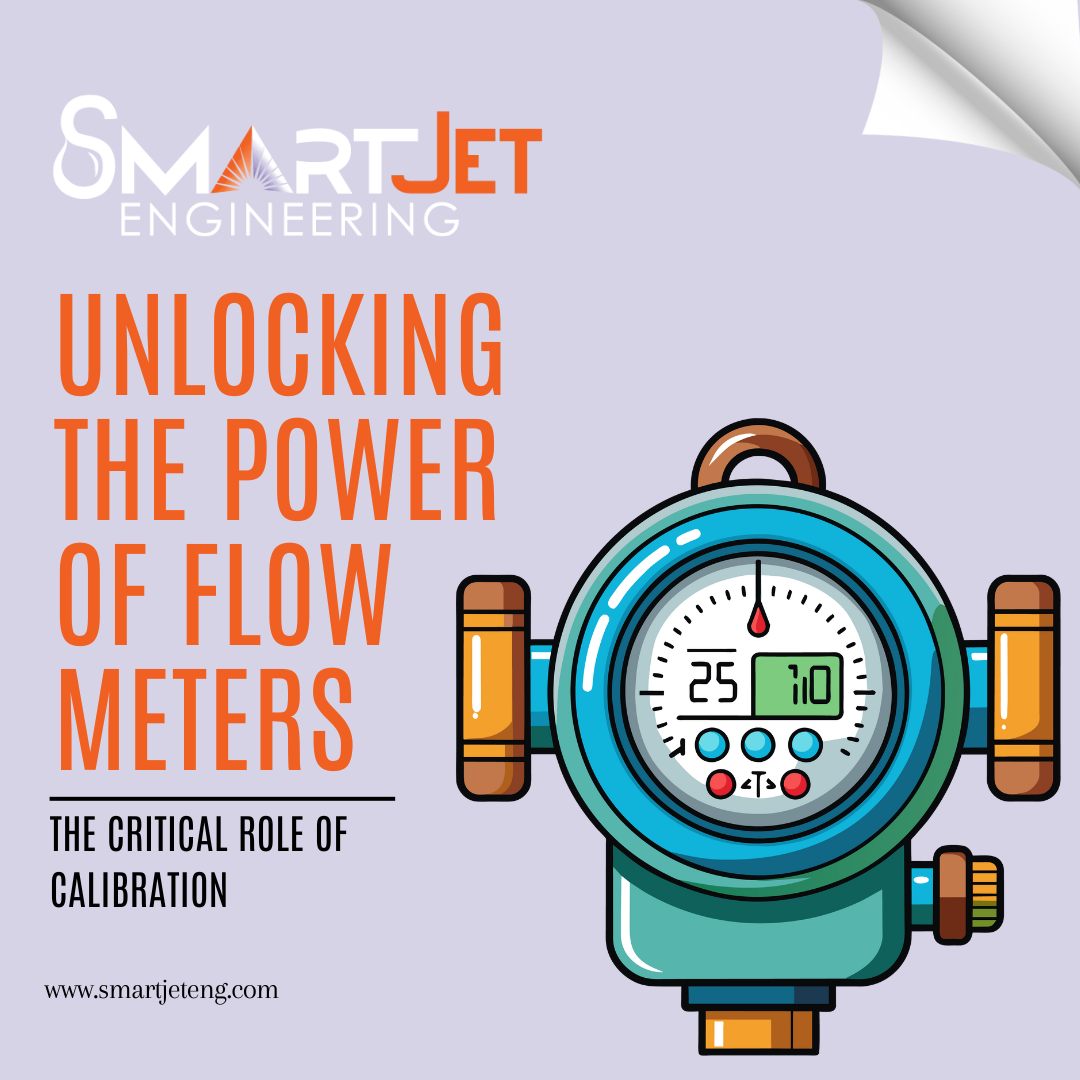Why Calibration is Key to Accuracy
By - Admin

The Ultimate Guide to Flow Meters and Why Calibration is Key to Accuracy
Flow meters are essential tools in a wide range of industries, from water management to oil and gas production, to chemical processing and even food and beverage industries. These devices measure the flow rate of liquids, gases, or steam, providing crucial data that helps in controlling processes and ensuring efficient operations. But here's the thing—no matter how advanced your flow meter is, its accuracy can degrade over time if it's not calibrated regularly.
In this ultimate guide, we’re going to take a deep dive into the world of flow meters. We'll explore what they are, how they work, the different types available, and most importantly, why calibration is key to maintaining their accuracy.
What is a Flow Meter?
A flow meter is a device used to measure the amount (or flow) of liquid, gas, or steam moving through a pipe or other conduit. This measurement is typically expressed as volume per unit of time, such as liters per second (L/s) or gallons per minute (GPM). Whether you're monitoring water usage in a municipal system or measuring fuel flow in an engine, flow meters provide critical data that can be used for a variety of purposes.
How Do Flow Meters Work?
Flow meters work by sensing the movement of a fluid or gas through a system and converting that into data, typically displayed on a digital or analog readout. The specific way a flow meter measures flow can vary depending on the type of meter used. Some use mechanical parts like turbines, while others rely on advanced technologies like ultrasonic waves or electromagnetic fields.
Regardless of the type, the principle remains the same: the meter measures the velocity, pressure, or volume of the fluid or gas and translates that information into useful data.
Why Are Flow Meters Important?
Flow meters are vital for several reasons. First, they ensure that the correct amount of fluid or gas is being transported and used in a system. This is essential for maintaining efficiency and ensuring safety. In industries like oil and gas, even small inaccuracies can lead to significant financial losses or dangerous safety hazards.
Additionally, flow meters can help monitor and control processes, ensure regulatory compliance, and improve resource management. Whether you're managing water usage in an agricultural setting or controlling gas flow in an industrial facility, flow meters are essential tools for keeping operations running smoothly.
Types of Flow Meters
There are many types of flow meters, each suited to different applications. Here are some of the most common types:
1. Turbine Flow Meters
Turbine flow meters use a rotating turbine to measure the flow of liquids or gases. As the fluid moves through the meter, it spins the turbine, and the speed of the spinning is used to calculate the flow rate. These meters are popular in industries like water management and fuel measurement because they are relatively simple and provide reliable readings.
2. Ultrasonic Flow Meters
Ultrasonic flow meters use sound waves to measure the velocity of the fluid moving through the pipe. They are non-invasive, meaning the meter doesn’t need to touch the fluid, making them ideal for applications where contamination is a concern, such as in the food and beverage industry.
3. Electromagnetic Flow Meters
Electromagnetic flow meters work by generating a magnetic field and measuring how the fluid interacts with that field. They are highly accurate and are often used for measuring the flow of conductive liquids like water or chemicals. These meters are great for applications where high precision is required.
4. Coriolis Flow Meters
Coriolis flow meters measure the mass flow rate of a fluid by detecting the force exerted by the fluid as it moves through a vibrating tube. These meters are extremely accurate and are commonly used in industries where precise measurements are critical, such as oil and gas or pharmaceuticals.
5. Differential Pressure Flow Meters
These meters measure the difference in pressure across a restriction in the flow path, such as an orifice plate or venturi tube, to calculate the flow rate. They are widely used in applications that require measuring the flow of steam, gases, or liquids.
Why Calibration is Key to Accuracy
Now, let’s talk about calibration—a topic that often doesn’t get the attention it deserves. Calibration is the process of adjusting your flow meter to ensure that it provides accurate readings. Over time, even the best flow meters can drift from their original calibration, leading to inaccurate data and potentially costly errors.
Here’s why calibration is so important:
1. Ensures Accurate Data
Flow meters are used to measure some of the most critical aspects of a system—whether it's the amount of fuel entering an engine or the amount of water being used in a municipal system. If the flow meter isn't properly calibrated, the data it provides may be inaccurate, leading to incorrect decisions or inefficient operations.
2. Prevents Financial Losses
In industries like oil and gas, inaccurate flow readings can lead to financial losses. For example, if your meter underestimates the amount of oil flowing through a pipeline, you could be losing product without even knowing it. Regular calibration ensures that your flow meter is providing the correct readings, helping to avoid costly errors.
3. Ensures Compliance with Regulations
Many industries are subject to strict regulatory standards regarding the measurement of liquids, gases, or steam. Inaccurate flow readings can lead to non-compliance, resulting in fines or other penalties. Regular calibration helps ensure that your flow meter is meeting the necessary regulatory requirements.
4. Increases Safety
In some cases, inaccurate flow meter readings can lead to dangerous situations. For example, in chemical processing, an incorrect flow rate could lead to a hazardous buildup of materials. Calibration helps ensure that your systems are operating safely and efficiently.
5. Extends the Life of the Equipment
Regular calibration can also extend the life of your flow meter. When a meter is properly calibrated, it’s less likely to experience strain or damage due to improper measurements. This means fewer breakdowns, reduced maintenance costs, and a longer lifespan for your equipment.
How Often Should Flow Meters Be Calibrated?
The frequency of calibration depends on several factors, including the type of flow meter, the environment it's used in, and the accuracy required for the specific application. In general, it’s a good idea to calibrate flow meters at least once a year. However, if the meter is used in harsh environments or for critical applications, more frequent calibration may be necessary.
Conclusion
Flow meters are an essential tool in many industries, providing critical data that helps improve efficiency, ensure safety, and meet regulatory standards. But to get the most out of your flow meter, calibration is key. Without regular calibration, even the most advanced flow meter can provide inaccurate data, leading to costly mistakes and potential safety hazards.
At Smart Jet Engineering, we understand the importance of accurate flow measurement and offer comprehensive flow meter calibration services. Our expert team ensures that your flow meters are always delivering the reliable data you need to keep your operations running smoothly.
FAQs
Q.1 What is the main purpose of a flow meter?
The main purpose of a flow meter is to measure the amount of fluid, gas, or steam moving through a system. This data is used to ensure efficiency, safety, and regulatory compliance.
Q.2 Why does a flow meter need calibration?
Over time, flow meters can drift from their original settings, leading to inaccurate measurements. Calibration adjusts the meter to restore its accuracy.
Q.3 How do I know when my flow meter needs calibration?
Signs that your flow meter may need calibration include inconsistent or unreliable data, changes in performance, or if it’s been more than a year since its last calibration.
Q.4 What happens if a flow meter isn’t calibrated regularly?
If a flow meter isn’t calibrated regularly, it can provide inaccurate readings, leading to inefficiencies, safety risks, and financial losses.
Q.5 Can I calibrate a flow meter myself?
While some basic checks can be done in-house, proper calibration typically requires specialized equipment and expertise. It's best to hire professionals like those at Smart Jet Engineering to handle the calibration.
Related Blogs
Search
Popular Posts

The Importance of Ground Fuel Monitoring in Modern Aviation Operations
March 27, 2025

The Importance of Fuel Storage Tanks in Modern Aviation Operations
March 27, 2025

Why Testing and Commissioning is the Ultimate Step in Quality Control
January 29, 2025

Unlocking the Power of Flow Meters: The Critical Role of Calibration
January 29, 2025

Industrial Plant Maintenance and Servicing
March 22, 2025







